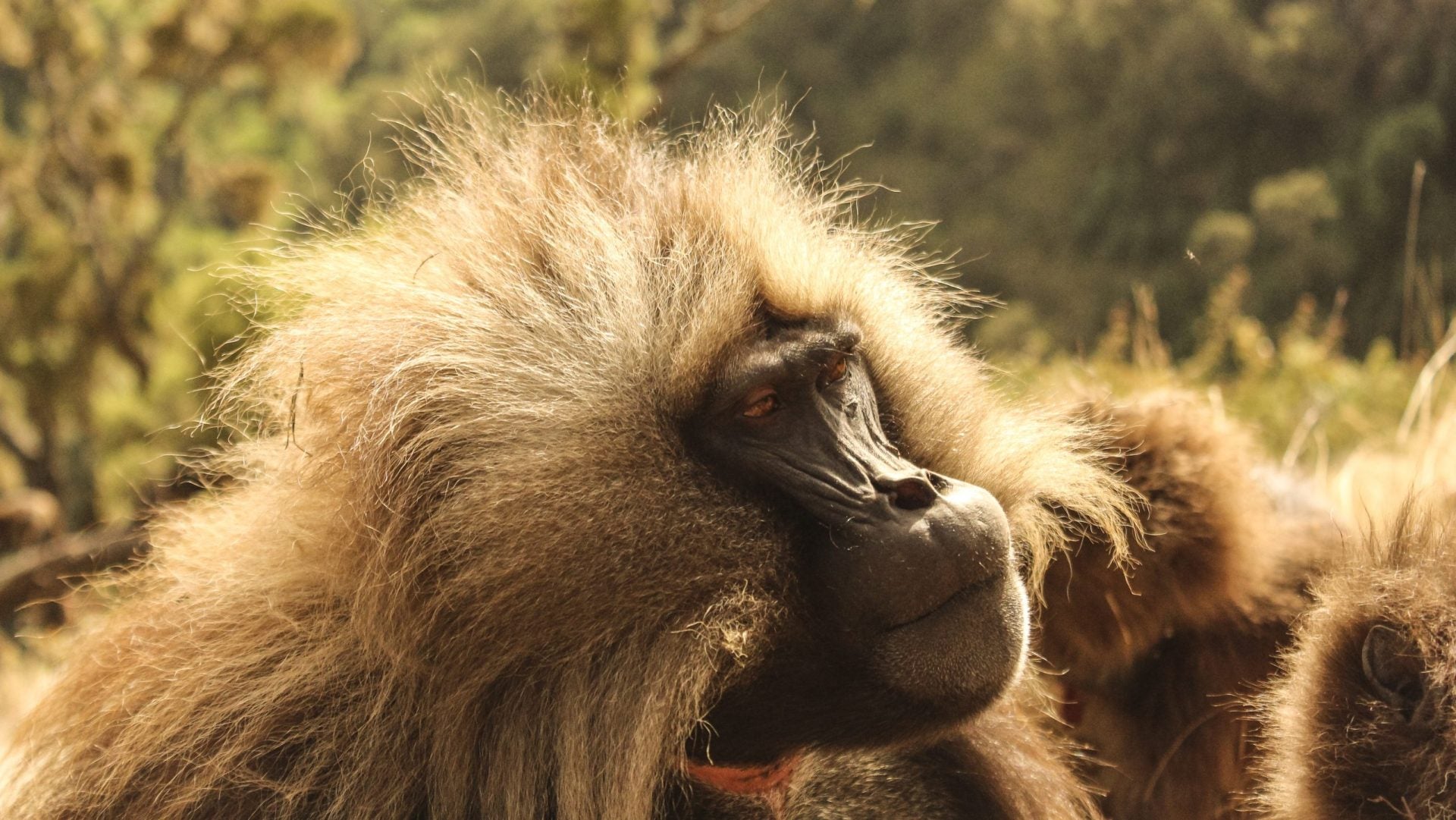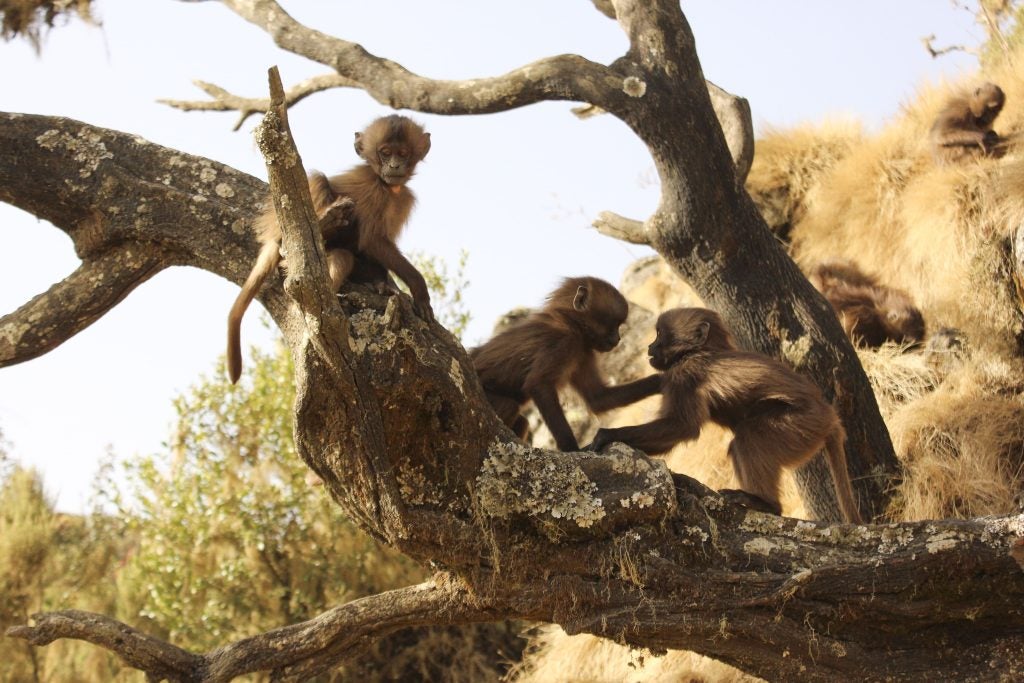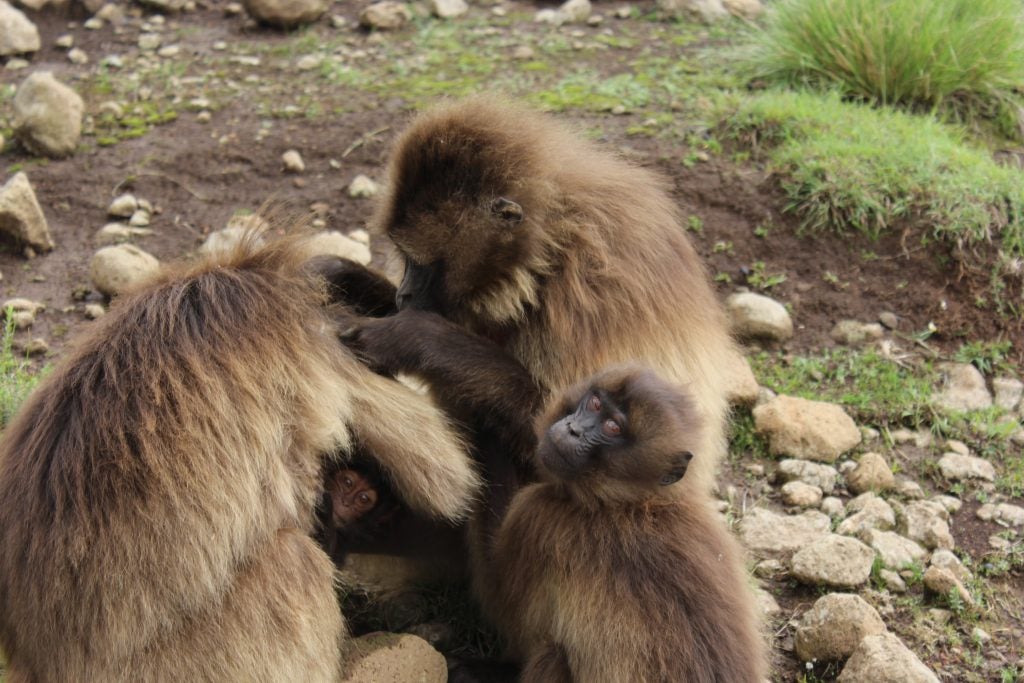
Research
I am a behavioral ecologist broadly interested in sexual selection, life history theory, and aging in non-human primates. I employ a three pronged approach in my current research incorporating field endocrinology, genetics, and behavioral analysis in order to answer questions related to the mechanism and function of male reproductive behaviors.
My dissertation examined the effect of social environments in shaping male life history using long term data from the Simien Mountains Gelada Research Project (SMGRP) in Ethiopia. Broadly, my research focuses on two distinct stages within male gelada life history where individual differences in behavioral strategies may emerge –
i. development in juvenile males and subsequent dispersal strategies, and
ii. dominance in leader males and individual variation in male reproductive strategies
——————————————————————————————————-
Male development
This research focuses on the social correlates of male development in geladas. Some of the questions that I am trying to answer are: What is the normative androgen profile of developing geladas? How does maternal rank, presence of younger siblings, and male peers within the group affect juvenile development and dispersal in geladas?
Using long term data on behavior, demography, and hormones spanning 14 years, we first quantified the age specific androgen profiles for developing male geladas. We found that maternal rank influences male androgen production in juvenile male geladas such that male offspring sired by low ranking moms exhibit higher age-specific fecal androgen metabolite levels. We also found that the number of male peers and unit size drive individual variation in age of dispersal for geladas in our study population. Males with more peers and in larger social units dispersed earlier than males without peers and in smaller units. Our results indicate that maternal effects (via maternal rank at birth) might program male offspring development in non-human primates. Specifically our study supports the idea that in multileveled social systems, social context and availability of suitable partners may be important factors that drive dispersal behavior and male development. This study is now published in Hormones & Behavior.


Male reproductive strategies
This part of my dissertation focuses on dominant male geladas in order to assess factors that lead to variation in male reproductive success. This research asks questions such as: How do dominant leader males establish and form strong social bonds? And does social bonds with females allow males to reproduce longer? What alternate reproductive strategies do male geladas opt for?


Method validation
I am also interested in developing non-invasive tools to help monitor animals for long term field research. Current method validation projects include developing a laser photogrammetry method to measure body size in adult geladas, sequencing microsatellites using MiSeq to genotype geladas. Detailed protocol and validation results of our new enzymeimmunoassay to measure fecal androgen metabolite levels in geladas is now available online.
